- What Is a Programming Language?
- How to decide which programming language to learn
- What Are the Most Popular Programming Languages in 2023?
- Top Programming Languages for Web Development
- The Best Programming Language to Learn First
- What’s the Best Way to Get Started with JavaScript?
- Get Started with Coding
- FAQs About Programming Languages to Learn First
If you’re a beginner programmer, you might be wondering how to choose a programming language. With so many languages out there, it can be difficult to decide which one is right for you. We’ll discuss the most popular programming languages in 2024, what benefits they offer, and where to start.
This article will discuss the most popular programming languages in 2024 and what benefits they offer. We will also give some tips on how to choose the right language for your needs. So whether you’re a beginner or an experienced programmer, read on to find out which language you should learn first!
- What Is a Programming Language?
- How to decide which programming language to learn
- What Are the Most Popular Programming Languages in 2024?
- Top Programming Languages for Web Development
- The Best Programming Language to Learn First
- What’s the Best Way to Get Started with JavaScript?
- Get Started with Coding
What Is a Programming Language?
A programming language is a formal language that specifies a set of instructions that can be used to produce various kinds of output. Programming languages are used in computer programming to implement logic flows and algorithms.
Levels of programming languages
Programming languages can be categorized by level. These levels relate to the level of abstraction from the machine code that runs on a computer.
- Low-level programming language
- High-level programming language
Low-level languages
A low-level language is a programming language that provides little or no abstraction from a computer’s instruction set architecture. Low-level languages are typically used to write system software, such as operating systems and device drivers, or to access hardware devices.
Examples of low-level programming languages include machine code and assembly language.
- Machine code is a low-level language. It is the only language that can be directly executed by the computer.
- Assembly language is a low-level language. It is a human-readable form of machine code that can be more easily written and understood by programmers.
However, it is difficult for humans to read and write machine code. As a result, higher level programming languages were developed that allow humans to write code that is easier for them to read and understand.
High-level languages
A high-level language is a programming language that provides abstraction from a computer’s instruction set architecture. High-level languages are typically used to write application software, such as web applications and programs.
Examples of high-level programming languages include JavaScript, Python, C++, and Java.
While high-level languages are easier for humans to read and write, they must be translated into machine code before they can be executed by a computer. This translation is typically done by a compiler or an interpreter.
- Compilers: A compiler is a program that translates source code written in a high-level language into machine code. The machine code can be directly executed by the computer.
- Interpreters: An interpreter is a program that translates and executes source code written in a high-level language. The machine code is not directly executed by the computer.
Types of programming languages
There are many different types of programming languages. Some languages are designed for specific purposes, while others are more general-purpose.
Examples of specific-purpose programming languages include:
- SQL: SQL is a language used for managing data in databases.
- HTML: HTML is a markup language used for creating web pages.
- CSS: CSS is a style sheet language used to describe a web page’s presentation.
Examples of general-purpose programming languages include:
- C++: C++ can be used for a variety of purposes, such as system software, application software, and games.
- Java: Java is a language that can be used for web applications, mobile applications, and big data.
- Python: Python is a versatile language that can be used for things such as artificial intelligence, machine learning, and web development.
What is a programming paradigm?
A programming paradigm is a way of thinking about programming. It is a conceptual model that dictates how we should write our code.
There are many different types of programming languages. Some are more versatile than others and can be used for a variety of purposes. Others are more specialized and are designed for specific tasks.
When it comes to learning a programming language, there are different types of programming paradigms that can be followed. These include:
- Logic programming
- Object-oriented programming Language
- Scripting programming languages
- Functional programming languages
- Procedural programming languages
Each type of paradigm has its own set of benefits and drawbacks. For instance, logic programming is great for solving complex problems, but can be difficult to read and understand. On the other hand, object-oriented programming languages are much easier to read and write, but may not be as powerful when it comes to solving complex problems.
While there are many different programming paradigms, most programming languages can be classified as either imperative or declarative.
- Imperative programming languages are based on the concept of commands. Commands are instructions that tell the computer what to do.
- Declarative programming languages are based on the concept of expressions. Expressions are statements that describe what should be done, but they don’t specify how it should be done.
Object-oriented programming
Object-oriented programming is a paradigm that is based on the concept of objects and their interactions. Objects are self-contained units that have data and behavior.
Object-oriented programming languages include C++, Java, and Python.
Scripting programming languages
Scripting programming languages are high-level languages that are designed for automating tasks. They are typically used to write small programs or scripts.
Scripting programming languages include Perl, PHP, and Python.
Functional programming languages
Functional programming is a paradigm that is based on the evaluation of functions. Functions are self-contained units of code that take input and produce output.
Functional programming languages include Haskell and Lisp. JavaScript can also be used as a functional programming language.
Procedural programming languages
Procedural programming focuses on the step-by-step execution of a set of instructions (procedures). Procedures are self-contained units of code that carry out a specific task.
Procedural programming languages include C and Pascal.
Logic programming
Logic programming is a type of programming language that is based on formal logic. It is typically used for artificial intelligence applications.
Programs written in a logic programming language are sets of logical statements. These statements can be used to deduce new facts or solve problems.
Logic programming languages include Prolog and LISP.
If you are not sure what type of programming you want to do, you should consider learning a scripting language. Scripting languages like JavaScript are typically easy to learn and can be used for a wide range of tasks.
How to decide which programming language to learn

To decide which programming language you want to learn first, you need to think about why you want to learn to program in the first place. Programming is so ubiquitous now that you can use your coding skills in web development, machine learning, game development, automation, and even art.
Follow this process to decide which programming language to learn first.
- Start by answering why you want to learn to code
Are you learning for your career, to build your startup idea, to solve a problem at work, or just for fun? This is the most important step as learning is a big commitment and it’s always good to know why you’re doing it.
- Find which programming languages are in that path or field
Web developers mainly use JavaScript, Data Scientists use Python, Game Developers use Unity and C++. If it’s a problem or application you’re building for yourself, then look into the popular technologies that are in that area. Knowing this also helps narrow down which languages are available to consider – there’s not many front end developers coding with Haskell.
- Acknowledge how much time you have and be realistic
This is one of the most important and often overlooked steps. Committing to a large task with only a few hours to spare each week leads to people giving up on their goals.
A rule of thumb is that your first programming language will take between 3 to 6 months to get to an intermediate skill level. Languages like Python and JavaScript have a shorter learning curve, whereas languages like C++ and Java can be more time consuming.
Some of us have more time than others, and if you are very time poor, you might want to look at different ways to achieve your outcome. For example, if your end goal is to run your own simple website, instead of learning HTML, CSS and JavaScript, you could look at alternative approaches like building it with a no-code website builder, find a programmer friend who can help, or hiring a freelancer instead.
It is also important to consider any deadlines you have and whether you have time to learn.
- Don’t stress
Learning your first language is more about developing your thinking processes rather than the code itself. Many languages have different ways to say the same thing, which means once you know how functions and loops work, then you’ll be able to learn how to write it in many languages much faster than you did the first time.
What Are the Most Popular Programming Languages in 2023?
According to the 2023 Stack Overflow Developer Survey, the most popular programming technologies amongst professional devlopers are:
- JavaScript
- HTML and CSS
- SQL
- Python
- TypeScript
- Bash/Shell
- Java
- C#
- C++
- PHP
- C
- Go
- PowerShell
- Rust
- Kotlin
- Ruby
- Dart
- Lua
- Swift
- Assembly
Each of these languages has different benefits that make them well-suited for different purposes. To choose the right language for your needs, you should consider what you want to use the language for.
If you’re interested in web development, then JavaScript or PHP might be a good choice. Python might be a good choice if you’re interested in data science or machine learning. If you’re interested in game development, then C++ might be the one for you. And if you’re looking for a versatile language that can be used for a variety of applications, then C# is worth a look.
No matter what your goals are, there’s a language out there that’s perfect for you. So don’t be afraid to experiment and find the one that fits your needs.
Top Programming Languages for Web Development
Now that we’ve gone over the different types of programming languages, let’s take a look at some specific languages.
Web development is one of the most popular types of programming. If you’re a developer in 2024, chances are high that you’re a web developer.
There are a number of different languages that are commonly used for web development. In 2024, we think it’s smart to pick a first language that you can put to use in the browser, and our recommendations are informed by this philosophy.
JavaScript
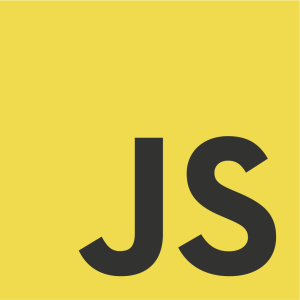
JavaScript is the most popular programming language in the world for web development, and it’s one of the easiest to learn. It’s also one of the few languages that can be used on both the front-end and back-end of web development. Popular frameworks like React, Vue and Node.js are written in JavaScript and it’s safe to assume that if you want to be a web developer, you will need to use JavaScript eventually.
If you already know that you want your focus to be web development in 2024, JavaScript should be your first language.
Pros of JavaScript
- It’s popular, so there are a lot of resources and community support.
- It’s easy to learn for beginners.
- It can be used on both the front-end and back-end of web development.
- It’s perfect for someone who wants to be a front end developer as popular frameworks like React, Vue, and Svelte use JavaScript.
Cons of JavaScript
- It’s not always easy to debug code because it’s not a compiled language, and as it doesn’t have strict types, errors such as type errors and undefined variables can be tricky to spot (TypeScript addresses these concerns by offering strict types)
- The syntax can be confusing to interpret at first (compared to languages like Python that are designed to look more like natural languages).
Python
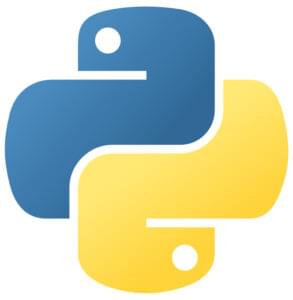
Python is another language that’s used for web development and it’s a heavyweight like JavaScript in terms of popularity. In fact, it is the most widely used programming language in the world. It’s a versatile scripting language that can be used for a wide range of tasks, from web development, automating tasks, and machine learning.
Despite its popularity, Python is not as prevalent as JavaScript in the web development scene. Your web browser cannot run Python code like it can with JavaScript. PyScript is trying to change that, but for now if you want to build a front end web application or website, you may have to stick to JavaScript.
Python is an extremely powerful language for creating APIs, backend services, data engineering and other aspects of web development. We still highly recommend this as a programming language for anyone to learn.
Python is a great language to learn if you’re interested in pursuing a career in web development or data science.
Pros of Python:
- It has a clear and concise syntax.
- It’s easy to learn for beginners.
- It has a wide range of applications.
Cons of Python:
- It’s not as fast as some other languages.
- It has a limited number of web development frameworks.
Where to start:
- The Python team has compiled a great list of Python learning resources with many free options.
- Start your Journey on SitePoint with Python Apprentice, Journeyman and Master.
PHP
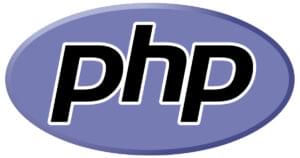
PHP is a popular scripting language that is used for web development. It’s a great language to learn if you’re interested in creating dynamic web applications.
It is used by 76.6% of all websites with a known server-side programming language. PHP is often used in content management systems (CMS) like WordPress and Drupal, and large sites likes Facebook and Wikipedia still use it for their back end.
Although it remains popular, PHP is not often the language of choice for new projects and tech stacks. Learning PHP will provide you with great knowledge of a proven language and the job security knowing that it won’t be going away any time soon.
Pros of PHP:
- It’s used in popular content management systems (CMS) like WordPress and Drupal, leading to stable ongoing demand.
- It’s versatile and can be used for web development, scripting, and more.
- It’s relatively easy to learn.
Cons of PHP:
- No longer as popular as some other languages for web development.
- Some people find the syntax confusing.
Where to start:
- PHP & MySQL: Novice to Ninja is the perfect guide for aspiring web developers. With this hands-on guide, you’ll learn how to install and configure PHP and MySQL, create database schemas, and write object-oriented code. You’ll also learn how to control access to your data and publish it on the web. When you’re finished, you’ll have the skills you need to build powerful server-side applications.
Ruby
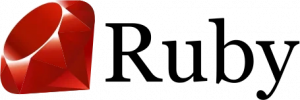
Ruby is another versatile language that can be used for web development. It’s known for being a relatively easy language to learn, and it’s used in popular frameworks like Ruby on Rails.
Ruby is a great choice for beginners because it has a very readable syntax. It’s also popular in the startup community.
Pros of Ruby:
- The syntax is very readable and concise.
- It’s used in popular frameworks like Ruby on Rails.
- It’s popular in the startup community.
Cons of Ruby:
- Some people find it difficult to learn.
- Not as popular as some other languages.
- There are relatively few resources compared to other languages.
Swift

Swift is a newer language that was created by Apple. It’s a powerful and fast language that can be used for web development, mobile app development, and more.
Swift is a great choice if you’re interested in creating iOS or macOS apps.
Pros of Swift:
- It’s a powerful and fast language.
- It’s easy to learn and read.
- It can be used for web development, mobile app development, and more.
Cons of Swift:
- Not as many resources available as some other languages.
- You need a Mac to develop iOS apps.
Kotlin

Kotlin is a newer language that was created by JetBrains. It’s a versatile language that can be used for web development, Android development, and more.
Kotlin is a great choice if you’re interested in creating cross-platform applications.
Pros of Kotlin:
- It’s a concise and expressive language.
- It’s compatible with Java.
- It has great tooling support.
Cons of Kotlin:
- It’s a newer language, so there’s not as much documentation available.
- You may have to learn some Java to use Kotlin effectively.
- Kotlin is a great choice for those who are interested in creating cross-platform applications.
Go
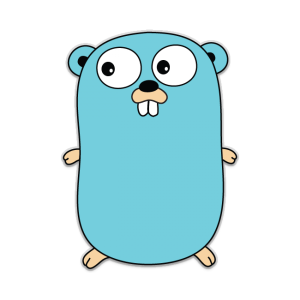
Go is a language that was created by Google. If you’re looking for a fast and powerful language that is versatile, go with Go. It might be a little more difficult to learn than some other languages, but it will be worth it in the end.
Go is a great choice if you’re interested in creating scalable applications.
Pros of Go:
- It’s fast and powerful
- Go is great for multiple purposes, like web development and distributed systems
- It’s great for scalable web applications
Cons of Go:
- It can be difficult to learn if you’re coming from a different programming language
- A relatively new language, so there’s not as much documentation available.
Java
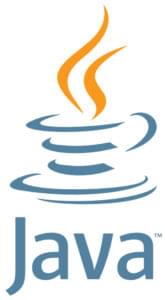
Java is a versatile language that can be used for web development, Android development, and more.
Java is a great choice if you’re interested in creating cross-platform applications.
Pros of Java:
- It’s a versatile multi-purpose language.
- Java is great for creating cross-platform applications.
Cons of Java:
- Java can be a bit verbose.
- Not as popular for web development as it once was.
- It can be slower than other languages.
- Java can be difficult to learn for beginners.
C#
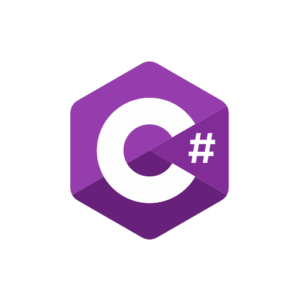
C# is a Microsoft language that is often used for web development, desktop applications, and more.
C# is a great choice if you’re interested in creating Windows applications or games.
Pros of C#:
- It’s fairly easy to learn.
- C# is a versatile language that can be used for a variety of applications.
- It has great tools and resources available.
Cons of C#
- It can be more difficult to learn than the popular beginner-friendly languages.
The Best Programming Language to Learn First
What language should I learn first? We recommend starting with JavaScript or Python, depending on your needs.
- For web development: JavaScript is the most popular programming language in the world and it’s versatile enough to be used for a wide range of applications. It’s a great choice for beginners because it’s easy to learn and plenty of resources are available.
- For everything else: Python is a versatile scripting language that can be used for a wide range of tasks. It has a clean syntax and is renowned for being easy to learn and read. It is very popular and Python skills are in high demand.
If you intend to do any web development, you will be using JavaScript at some stage (probably soon). It’s a very safe bet in terms of approachability, demand, and practicality.
If you are starting from scratch and still figuring out what you’ll focus on in development, the best programming language to learn first is Python. PHP, Java, and C# are all great languages with a lot to offer. However, if you want the most bang for your buck, learning Python will give you the ability to tackle the widest range of problems and projects, and it should be relatively easy to adapt the skills you’ve learned with Python to other languages.
What’s the Best Way to Get Started with JavaScript?
JavaScript is the most popular programming language in the world for good reason. It’s versatile, easy to learn, and there are plenty of resources available. If you’re just getting started in development, JavaScript is a great choice.
There are so many resources available to someone trying to learn JavaScript in 2023 that it’s no longer a problem of finding content, it’s now a problem of finding the best content for you.
We recommend starting with a free course to cover the basics and to decide whether JavaScript is right for you. Each person learns in different ways however we believe that taking the linear course approach helps you learn the fundamentals and move onto your own projects as quickly as possible. This is also how you avoid getting stuck in tutorial hell, where you may spend more time copying and pasting code instead of learning and experimenting with your own.
Our Free JavaScript Course Recommendations:
- Learn to Code with JavaScript: Yes it’s ours but we’re proud of it. Learn to Code with JavaScript is the perfect place to start on your coding journey. Not only does it teach you JavaScript but it also guides you through the fundamentals of programming and how you can apply these lessons to whatever languages you learn next.
- MDN JavaScript First Steps: The Mozilla Developer Network maintains the indispensable documentation of JavaScript and other language references. This very short intro will give you an overview of the language and a great explanation. Short and simple.
There are millions of JavaScript courses and guides to choose from. Finding the best resource for you will depend on your preferred learning style. Some people learn better with video, some with text. Meanwhile others like to start with a practical project and others like to start with the theory. If these options aren’t for you, freeCodeCamp has compiled a list of other free JavaScript courses for beginners and projects that might be more appealing.
Next Steps
Once you have a basic understanding of HTML, CSS, and JavaScript, you can start building projects and getting involved in the development community.
There’s plenty to explore in the JavaScript world, and you can browse our JavaScript books and courses and JavaScript articles to get an idea of what’s next.
When you’re ready to take your skills to the next level, you can round out your back-end skills with a language like Python or PHP. These languages will allow you to build a wide range of applications — these resources will give you a solid foundation:
Check out more PHP books and courses and more Python titles in the library. You can also check out our PHP articles and Python articles.
Get Started with Coding
To get started with programming, it’s important to find resources that fit your learning style.
- If you’re a visual learner, look for tutorials and text-based resources that include pictures and diagrams.
- If you’re an auditory learner, look for podcasts or video tutorials.
- If you’re a hands-on learner, look for resources that let you practice coding in your browser.
Once you’ve found resources that work for you, the best way to learn to program is to dive in and start coding. Don’t be afraid to make mistakes—everyone makes them! The important thing is that you learn from your mistakes and keep practicing.
Connecting with a Development Community
As you’re learning, it’s also important to find a community of other programmers to connect with. You can find online communities for almost any programming language, and these communities can be a great source of support and encouragement.
SitePoint offers a very friendly and supportive community in the form of our forum. Join it and start meeting other programmers from all over the world.
When you’re just getting started, it’s normal to feel overwhelmed by the sheer amount of information out there. But don’t worry—you don’t need to learn everything at once. Just focus on one thing at a time, and you’ll be surprised at how quickly you progress.
Don’t Get Discouraged When Debugging Gets Dire
No matter which language you choose to learn first, the most important thing is that you enjoy the process and don’t get too discouraged. The best way to learn a programming language is by writing code. Learning to code is a challenge, but it’s also incredibly rewarding. So get out there and start learning!
Which programming language do you want to learn first in 2024? Let us know over on the forums. Happy coding!
FAQs About Programming Languages to Learn First
Which programming language is best for getting a job?
The best programming language for getting a job depends on various factors, including your career goals, the job market in your area, and the specific industry or field you’re interested in. Here are some popular programming languages that are in high demand across different domains:
JavaScript: JavaScript is widely used for web development. It’s essential for front-end development (React, Angular, Vue.js) and back-end development (Node.js). JavaScript developers are in high demand due to the growth of web applications and the need for interactive and responsive user interfaces.
Python: Python is a versatile language used in web development, data science, machine learning, scientific computing, and more. It’s known for its readability and ease of learning, making it a popular choice for beginners and experienced developers alike.
Java: Java is a robust and widely-used language in enterprise applications, Android app development, and server-side development. It’s a stable choice for building large-scale, mission-critical systems.
C#: C# is commonly used for Windows desktop applications, game development with Unity, and web development with ASP.NET. It’s especially prevalent in the Microsoft ecosystem.
SQL: SQL (Structured Query Language) is essential for working with relational databases. Database administrators, data analysts, and data engineers often require strong SQL skills.
Ruby: Ruby is known for its simplicity and productivity. It’s used for web development, particularly with the Ruby on Rails framework, which is popular for building web applications.
Go (Golang): Go is gaining popularity for its efficiency and performance. It’s used in cloud-native development, microservices, and backend systems.
Swift and Kotlin: If you’re interested in mobile app development, Swift is used for iOS apps, and Kotlin is used for Android apps. Both are excellent choices for mobile developers.
R: R is a language commonly used in data analysis and statistics. If you’re interested in a career in data science or analytics, learning R can be valuable.
PHP: PHP is still relevant for web development, particularly in the context of content management systems (e.g., WordPress) and server-side scripting.
It’s important to note that the “best” programming language for getting a job can vary by region and industry. It’s often beneficial to research job listings in your desired location and field to identify which languages are in demand. Additionally, consider your personal interests and career goals when choosing a programming language to specialize in, as your passion for the language and the domain it serves can greatly impact your job satisfaction and success. Ultimately, staying adaptable and open to learning new languages and technologies can be advantageous in the ever-evolving tech industry.
Which programming language should I learn first as a beginner?
Choosing the first programming language as a beginner depends on your goals and interests. Different languages have different strengths and are suited to various types of projects. Here are some beginner-friendly programming languages, along with information on what they are commonly used for:
Python: Python is an excellent choice for beginners due to its readability and simplicity. It’s versatile and widely used in various domains, including web development, data analysis, scientific computing, and automation. Python has a large and supportive community, making it easier to find resources and help when you encounter problems.
JavaScript: If you’re interested in web development and creating interactive websites, JavaScript is essential. It’s the primary language for front-end web development (HTML and CSS are also crucial for web development). Learning JavaScript allows you to build dynamic and responsive user interfaces.
Java: Java is known for its platform independence, making it a good choice for learning programming concepts that apply to a wide range of applications. It’s commonly used in enterprise software, Android app development, and large-scale systems.
Scratch: Scratch is a visual programming language designed for children and beginners. It’s a fantastic way to learn programming concepts through a drag-and-drop interface, making it accessible to all ages.
Ruby: Ruby is known for its elegant and beginner-friendly syntax. It’s often used in web development, particularly with the Ruby on Rails framework, which simplifies building web applications.
Swift: If you’re interested in iOS app development, Swift is the language to learn. It’s developed by Apple and is used to create applications for iPhones, iPads, and macOS devices.
Kotlin: Kotlin is a modern and expressive language that’s officially supported for Android app development. It’s known for its conciseness and safety features.
HTML/CSS: While not programming languages in the traditional sense, HTML and CSS are essential for web development. HTML is used to structure web content, while CSS is used for styling and layout.
C#: C# is a language commonly used for Windows desktop applications and game development with Unity. If you’re interested in game development, this language may be a good choice.
Lua: Lua is a lightweight and easy-to-learn scripting language often used for game development, embedded systems, and scripting within larger applications.
Remember that the best language for you to start with depends on your goals and what you’re excited to learn. Consider what kind of projects you want to work on, whether it’s web development, mobile apps, data analysis, or something else. Once you’ve gained some experience with one language, it becomes easier to learn additional languages, so don’t feel pressured to make the “perfect” choice—just get started and enjoy the learning process.
Should I learn C++ or Python?
The choice between learning C++ or Python depends on your specific goals, interests, and the type of programming projects you want to work on. Here are some factors to consider when deciding between these two languages:
Learn Python if:
You’re a Beginner: Python is often recommended as a first programming language because of its simple and readable syntax. It’s an excellent choice for beginners who want to learn programming concepts without getting bogged down by complex syntax and low-level details.
Web Development: Python can be used for web development with frameworks like Django and Flask. While it’s not as dominant as JavaScript or Ruby in the web development world, Python can still be a good choice for building web applications.
Data Science and Machine Learning: Python has a rich ecosystem of libraries and tools for data analysis, machine learning, and artificial intelligence. Libraries like NumPy, pandas, scikit-learn, and TensorFlow make it a popular choice in these fields.
Scripting and Automation: Python is often used for scripting tasks and automating repetitive processes. It’s handy for tasks like data manipulation, file handling, and interacting with APIs.
Community and Resources: Python has a large and active community, which means there are plenty of resources, tutorials, and documentation available for learning and solving problems.
Learn C++ if:
Systems Programming: C++ is commonly used for system-level programming, embedded systems, and developing software that requires fine-grained control over hardware resources. If you want to work on low-level programming or create performance-critical applications, C++ is a strong choice.
Game Development: C++ is a popular language for game development, especially when using game engines like Unreal Engine or building high-performance graphics-intensive games.
Competitive Programming: C++ is a favorite among competitive programmers due to its speed and efficiency. It’s often used in coding competitions and programming contests.
Performance Optimization: C++ allows for manual memory management, which can be advantageous when optimizing code for maximum performance.
Deep Learning and AI: While Python is dominant in machine learning and AI, C++ can be used for these fields, particularly when performance is a critical concern.
In summary, if you’re just starting out in programming and want a language that’s beginner-friendly and versatile, Python is an excellent choice. On the other hand, if you have specific interests in areas like systems programming, game development, or competitive programming, or if you’re looking to dive into low-level details and performance optimization, C++ might be more suitable.
Keep in mind that learning multiple programming languages over time is common in a developer’s journey, and the choice between C++ and Python doesn’t have to be permanent. You can learn one and then expand your skills to include the other as needed for your projects and career goals.
Should I learn Java or Python?
The choice between learning Java or Python depends on your goals, interests, and the type of projects you want to work on. Both languages have their strengths and are widely used in different domains. Here are some factors to consider when deciding between Java and Python:
Learn Python if:
Ease of Learning: Python is known for its simplicity and readability. It’s often recommended as a first programming language because of its beginner-friendly syntax. If you’re new to programming, Python can be an excellent choice to start with.
Versatility: Python is a versatile language used in various fields, including web development, data analysis, machine learning, scientific computing, and automation. It has a wide range of libraries and frameworks that make it suitable for different types of projects.
Data Science and Machine Learning: Python has a strong ecosystem for data science and machine learning, with libraries like NumPy, pandas, scikit-learn, and TensorFlow. If you’re interested in these fields, Python is a popular choice.
Scripting and Automation: Python is commonly used for scripting tasks and automating repetitive processes. It’s valuable for tasks like data manipulation, file handling, and interaction with APIs.
Web Development: Python can be used for web development with frameworks like Django and Flask. While it may not be as dominant in web development as some other languages, it’s still a viable choice.
Learn Java if:
Platform Independence: Java is known for its “write once, run anywhere” capability. It’s platform-independent, which means applications written in Java can run on various platforms without modification. This makes Java suitable for cross-platform development.
Android App Development: Java is one of the primary languages for Android app development. If you’re interested in creating mobile apps for Android devices, learning Java is essential.
Enterprise Software: Java is widely used in enterprise software development. It’s known for its scalability, reliability, and robustness, making it a strong choice for building large-scale applications.
Job Market: Java has a well-established presence in the job market, and there is consistent demand for Java developers in various industries, including finance, healthcare, and government.
Back-End Development: Java is commonly used for server-side and back-end development. It’s supported by numerous frameworks and libraries, such as Spring, which simplify the development of web applications and services.
Ultimately, the choice between Java and Python should align with your career goals and the type of projects you find most interesting. If you’re new to programming and want a beginner-friendly language, Python is a good starting point. If you’re interested in Android app development, enterprise software, or cross-platform development, Java may be a more suitable choice. Additionally, learning both languages over time can broaden your skillset and open up more opportunities in the job market.
Should I learn SQL or Python First?
The decision to learn SQL or Python first depends on your specific goals and the type of work you want to pursue. Both SQL and Python are valuable and serve different purposes in the world of data and programming. Here’s a breakdown of when it might make sense to learn one before the other:
Learn SQL First if:
You Want to Work with Databases: SQL (Structured Query Language) is specifically designed for managing and querying relational databases. If you’re interested in roles like database administration, data analysis, data engineering, or any job that involves working extensively with databases, learning SQL is crucial.
Data Analysis: SQL is an essential tool for data analysts who need to retrieve, filter, and aggregate data from databases. It’s an important skill if you want to work with data but don’t necessarily need to perform complex data manipulations outside the database.
Database Development: If your goal is to become a database developer or work on the development and maintenance of database systems, SQL is a foundational skill.
Quick Entry into Data-Related Roles: Learning SQL is relatively quick, and you can start working with data and databases sooner compared to learning a general-purpose programming language like Python.
Learn Python First if:
General-Purpose Programming: Python is known for its versatility and is widely used for general-purpose programming. If you’re interested in web development, software development, automation, scripting, or other programming-related roles, Python is a great choice.
Data Science and Machine Learning: Python has a robust ecosystem for data science and machine learning. Libraries like NumPy, pandas, scikit-learn, and TensorFlow make Python a preferred language for data scientists and machine learning engineers.
Web Development: Python can be used for both back-end and front-end web development. Popular web frameworks like Django and Flask are built with Python, making it suitable for web development projects.
Data Analysis and Visualization: Python offers powerful libraries for data analysis (pandas) and data visualization (matplotlib, seaborn, Plotly), making it a go-to choice for data analysts who need to work with data outside of databases.
Automation and Scripting: Python is commonly used for automating repetitive tasks, scripting, and building small to large-scale applications.
Overall, the choice between learning SQL or Python first depends on your career goals and the type of work you aspire to do. If you’re primarily interested in database-related roles and managing data within databases, starting with SQL is a logical choice. On the other hand, if you have a broader interest in programming, data analysis, machine learning, web development, or automation, learning Python first can open up a wide range of opportunities. Many professionals eventually learn both SQL and Python, as these skills complement each other well in various data-related roles.
 Joel Falconer
Joel FalconerJoel Falconer is a technical content strategist. He has been managing editor at SitePoint, AppStorm, DesignCrowd, and Envato, and features editor at The Next Web.








